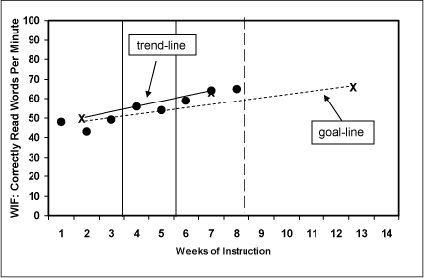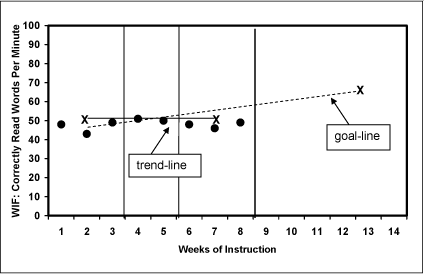As a part of the increasing emphasis among schools on meeting important statewide academic goals, schools are focusing more closely on the progress of individual students. As a parent, you have a similar goal — to monitor the progress of your own child. Frequent student progress monitoring accomplishes this common goal, in that it is used to track the progress of individual students in a way that is easily communicated. The best-known method of student progress monitoring — Curriculum-Based Measurement (CBM) — also enables teachers to select the teaching methods that work best with the individual child.
CBM, which teachers use to track students’ progress toward annual goals, offers a number of benefits to parents and students, as well as teachers. Please review the article, What Is Curriculum-Based Measurement and What Does It Mean for My Child? as background to understanding these benefits:
- You, as a parent, can feel confident that CBM is an accurate indicator of your child’s progress for the skills that are being measured. There is sound research backing CBM, as well as years of successful use of CBM in public schools.
- A CBM graph provides a clear visual representation of an academic performance goal for the school year and your child’s progress each time the measurements are taken (see examples at the end of this document, of progress monitoring graph with goal line, trend line, and data points).
- CBM graphs can help create a common understanding among parents, teachers, administrators, and other professionals (such as school psychologists).
- If your child receives special education services, CBM graphs can increase productive communication at IEP meetings about the child’s current performance level. They can also be useful in developing better goals and objectives for the IEP.
- CBM graphs can provide you with solid information that can easily be shared with new teachers and administrators. CBM graphs can be used at conferences with teachers and administrators to improve communications and to support your concerns and questions.
- The scores for the measurements (for example, the number of words correctly and incorrectly pronounced in a one-minute reading) are easy to understand and do not have to be interpreted, in contrast with typical standardized test scores.
- Because of the visual record that graphs provide, students can keep track of their own progress; in addition, seeing their graph change week by week often motivates students to work harder toward their goals.
- CBM evaluates the success of the instruction the child is receiving.
- CBM can be used as a screening test to identify students at risk of failing, whether or not the child currently receives special education services.
The National Center on Intensive Intervention offers information for parents, teachers, and school administrators about CBM and other methods of student progress monitoring. Keep an eye on our website for frequent updates and new information that can help you advocate for your child.
Figure 1: The trend-line is above the goal-line. The student is making progress.

Figure 2: The trend-line is below the goal line. The student is not making progress. An instructional change is needed.

McLane, K. (n.d.). Fact Sheet: Benefits of Curriculum-Based Measurement. Washington, D.C.: The National Center on Student Progress Monitoring, American Institutes for Research.
For more information, visit National Center on Intensive Intervention and the Center on Multi-Tiered Systems of Support (formerly the National Center on Response to Intervention).
